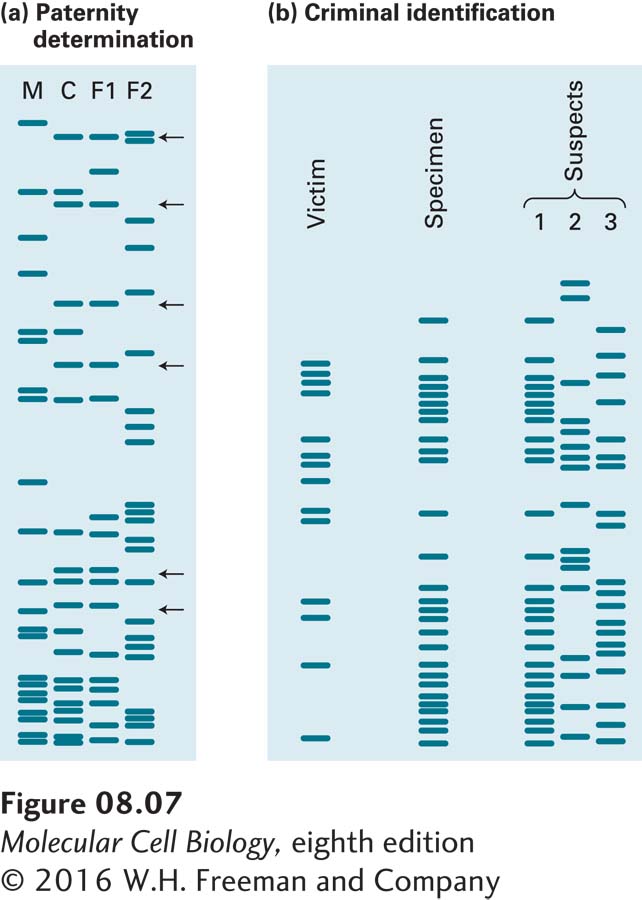
FIGURE 8- 7 Distinguishing individuals by DNA fingerprinting. (a) In this analysis of paternity, several minisatellite repeat lengths were determined by Southern blot analysis of restriction enzyme– digested genomic DNA and hybridization with a probe for a sequence shared by several minisatellite sequences. This method generated hypervariable multiband patterns for each individual called “DNA fingerprints.” Lane M shows the pattern of restriction fragment bands using the mother’s DNA; C, using the child’s DNA; and F1 and F2 using DNA from two potential fathers. The child has minisatellite repeat lengths inherited from either the mother or F1, demonstrating that F1 is the father. Arrows indicate restriction fragments from F1, but not F2, found in the child’s DNA. (b) In these “DNA fingerprints” of a specimen isolated from a rape victim and three men suspected of the crime, it is clear that minisatellite repeat lengths in the specimen match those of suspect 1. The victim’s DNA was included in the analysis to ensure that the specimen DNA was not contaminated with DNA from the victim.
[Leave] [Close]